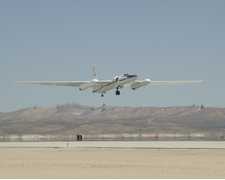
Airborne Lightning Observatory for FEGS and TGFs
Weather
- 1
- Deployment
2023-07-01 2023-07-30 - 2
- Platforms
- 5
- Data Products
The Campaign
The Airborne Lightning Observatory for FEGS and TGFs (ALOFT) was a field campaign carried out by NASA and the University of Bergen. Its main objectives were to observe terrestrial gamma-ray flashes (TGFs) and gamma-ray glows in thunderstorms and to help validate observations from the International Space Station Lightning Imaging Sensor (ISS LIS) and the Geostationary Lightning Mapper (GLM). ALOFT involved a single deployment in July 2023 across Florida, Central America, the Gulf of Mexico, and the Caribbean Sea. The NASA ER-2 aircraft was equipped with several sensors, including the Fly’s GLM Simulator (FEGS), Lightning Instrument Package (LIP), Electric Field Change Meter (EFCM), In Situ Thunderstorm Observer for Radiation Mechanisms (iSTORM), and University of Bergen-Bismuth-Germanium-Oxide (UIB-BGO), to collect measurements of lightning and radiation within thunderstorms. ALOFT was funded by NASA’s Weather and Atmospheric Dynamics program.
N: 32°N
S: 5°N
W: 105°W
E: 70°W
Additional Notes
Repositories
Events
Filter data products from this campaign by specific platforms, instruments, or formats.


